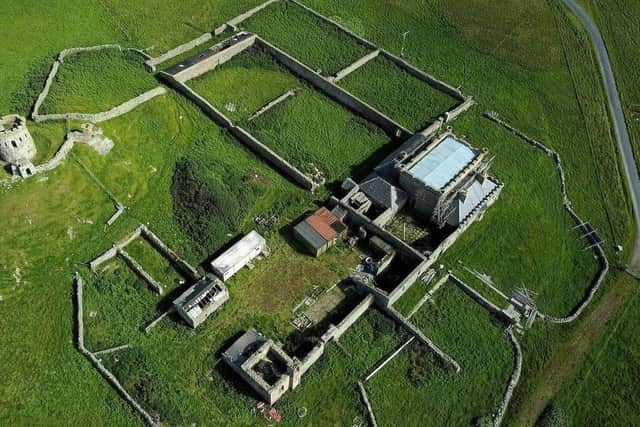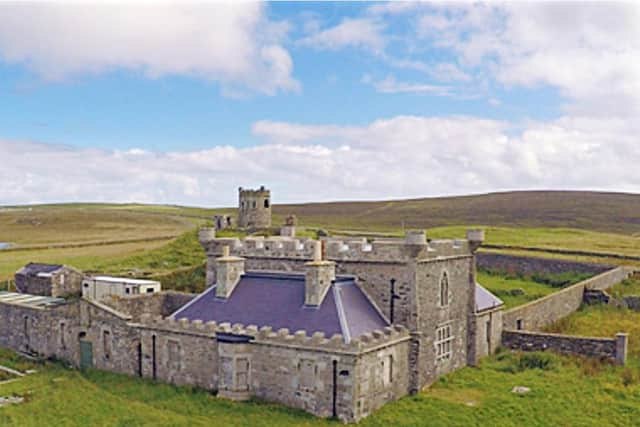German pledges full restoration of decaying Scottish island landmark
An imposing 19th-century house in Shetland is to be restored to its full glory after a German expert in the repair and protection of historic buildings bought the property.
Brough Lodge in Fetlar, a former laird’s house that has not been lived in since the 1970s, now sits alongside German castles and Italian palazzos in the portfolio of the European Heritage Project, which specialises in the restoration of of historic properties.
Advertisement
Hide AdAdvertisement
Hide AdThe project is headed by Dr Peter Löw, a lawyer with a long interest in restoration, who has been named among the richest 1,000 people in Germany.


Brough Lodge was sold for £30,000 and it is understood the full restoration will cost in the region of £12 million.
Dr Löw said Brough Lodge was one of the organisation’s “most spectacular Northern European projects” and described it as “indeed very special”. A statement from the project said: “The walls and grounds of the lodge have witnessed the downfall of the Viking era, the changes in land ownership of several generations, and the dynamics of aristocratic life in the Victorian era, making it an important monument of historical records.
“Since 1998, Brough Lodge was held by the Brough Lodge Trust. The trust put tremendous effort and monetary resources into the conservation and restoration of the estate. As Brough Lodge stood unoccupied since the 1970s, extensive repairs were required to stop the deterioration.
“The European Heritage Project will bundle all its expertise to ensure that Brough Lodge will be traced back to its architectural heritage – a testament to the intertwined narratives of history and architecture, which offers a profound glimpse into the soul of Fetlar and the history of the Shetland Islands.”


Brough Lodge was built in 1825 by merchant and landowner Sir Arthur Nicholson, who acquired the site in 1805 in a partial settlement of a debt owed by Andrew Bruce of Urie, who died in 1803.
The project said restoration of the building posed many challenges, not least given its island location and the availability of contractors.
A statement said: “Difficulties will have to be faced, such as the fact that the property is on an island that has faced depopulation and decline over recent decades as well as its remote location making it even more difficult to find suitable contractors and experts to meet the exceptional challenge of restoring the lodge.”
Advertisement
Hide AdAdvertisement
Hide AdBrough Lodge is considered one of the most northern examples of neogothic architecture in Europe, with it thought Sir Arthur may have been inspired by his travels through Europe with the design of the house.
The property features an enclosed courtyard, a walled garden, a chapel and a viewing tower that is built on an Iron Age broch. The restored building will be used as visitor accommodation, it is understood.
Brough Lodge Trust chairman Pierre Cambillard said: “From the outset, trustees have seen restoration of the building as a way of turning what many have understandably seen as a historical liability into a positive asset for an island that has faced many challenges.
“We always believed that a better future for the building, and for Fetlar, was possible.”
Comments
Want to join the conversation? Please or to comment on this article.